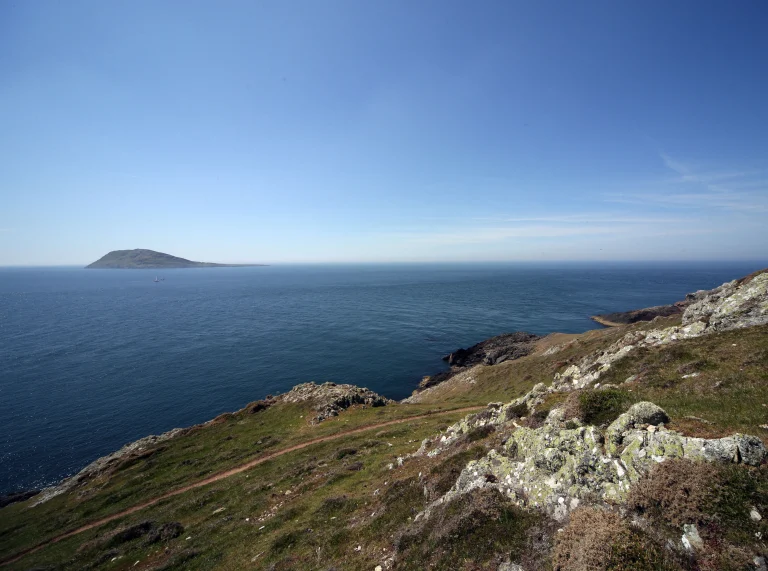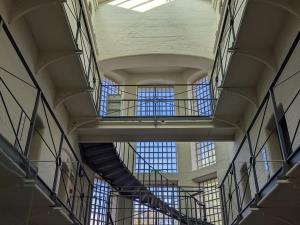The story of King Arthur and his connections to Wales
The earliest stories of Arthur originated from Wales, with the Welsh monk Nennius the first to write about a hero named Arthur in the ninth century. At this time, it is plausible that this “Arthur” was based upon a real-life Welsh tribal leader, who fought a number of battles against the Saxons.
Another Welshman, Geoffrey of Monmouth, is credited with inventing the Arthur we know today. In his 12th century tome, Historia Regum Britanniae (History of the Kings of Britain), Geoffrey elevates the Welsh Arthur character to the status of a mythical British king, who conquered the Saxons and even went toe-to-toe with the armies of Rome. Geoffrey also established the popular character of Merlin, based upon versions of sorcerers who had featured in earlier Welsh fables.
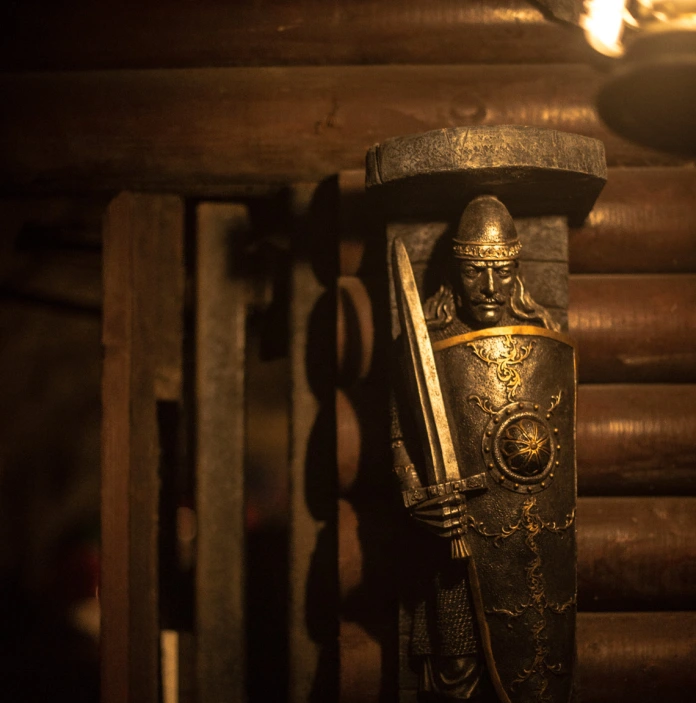
Geoffrey’s creative chronicle proved popular, and tales of Arthur’s heroics started to spring up right across Europe, with new storytellers, such as the Frenchman Chrétien de Troyes, adapting the source material to suit their readership. Before long, Arthur had acquired a legendary fortress (Camelot) and back-stabbing best friend (Lancelot). By the time the English poet Alfred Tennyson wrote about him in the 19th century, any memory of the character’s Welsh ancestry had been all but lost – though it remained firmly etched into places and monuments across Wales.
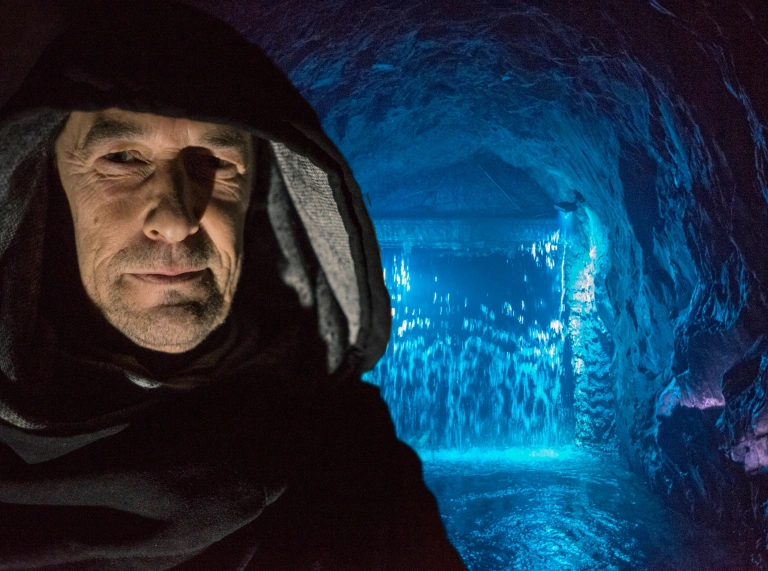
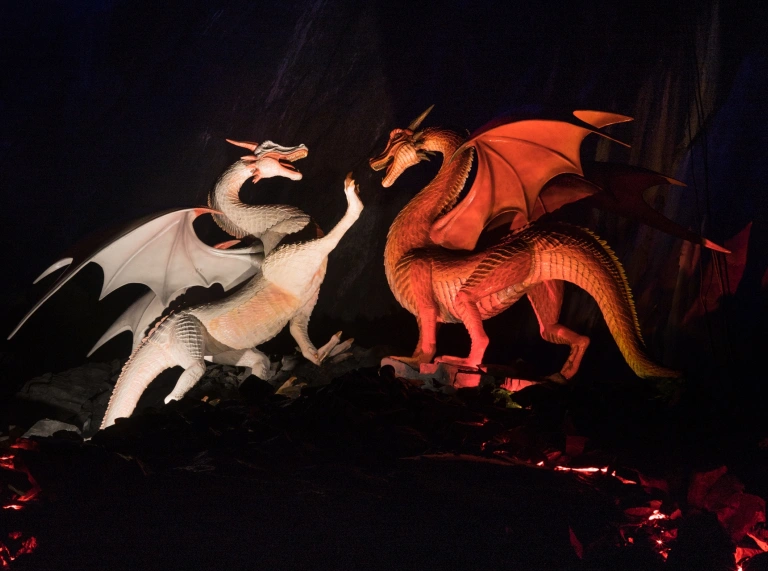
So where can I find Arthur in Wales?
There are thought to be over 300 sites in Wales that claim some connection with King Arthur, ranging from landmarks that feature in well-established legends to towns that boast rather tenuous links to the fabled figure. Here are 12 of our favourites to get you started.
Excalibur lake, Eryri (Snowdonia)
There are at least three Welsh lakes that claim to contain Arthur’s magical sword, Excalibur (Caledfwlch in the early Welsh tales), which the mighty king is said to have cast into the depths after he was mortally wounded. The lakes of Llydaw, Dinas and Ogwen are equally beautiful, and they’re all close together in the heart of the Eryri (Snowdonia) National Park. Surely one of them is bound to be the right one?
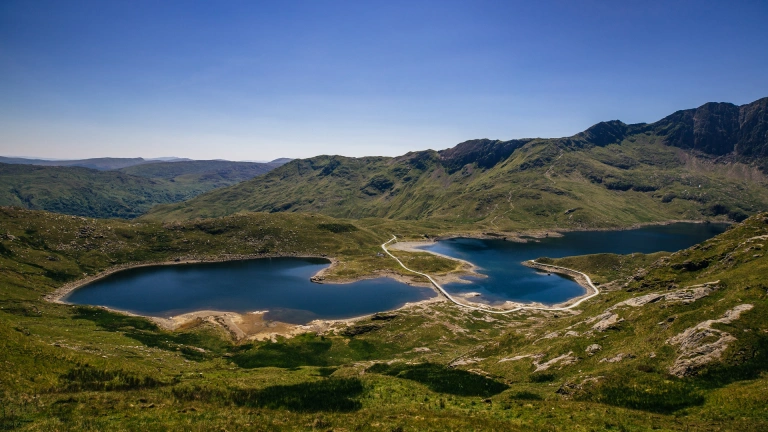
Arthur’s Stone, Gower
There are quite a few 'Arthur’s Stones' in Wales, but we chose this one because it sits pretty on the hills of Gower and is within handy walking distance of the King Arthur Hotel in Reynoldston. The prosaic explanation is that the huge stone is a Neolithic tomb, but legend says it’s a pebble from King Arthur’s boot. He threw it all the way from Carmarthenshire, and it magically grew in size along the way. The stone is reputedly thirsty, and occasionally gets up and goes to a nearby stream for a drink. Mind your toes.
Maen Huail, Ruthin
Maen Huail is a limestone block that’s plonked next to a historic-looking building in Ruthin Town Square. But this isn’t any old chunk of rock, it’s the very stone on which King Arthur beheaded the young warrior Huail, who’d made the fatal error of raiding Arthur’s lands and – even worse – nicking one of his mistresses. Ruthin is a pretty market town whose attractions include the excellent Ruthin Craft Centre and the Victorian-era Ruthin Gaol. It’s also the perfect base for exploring the Clwydian Range, one of Wales’ designated Areas of Outstanding Natural Beauty.
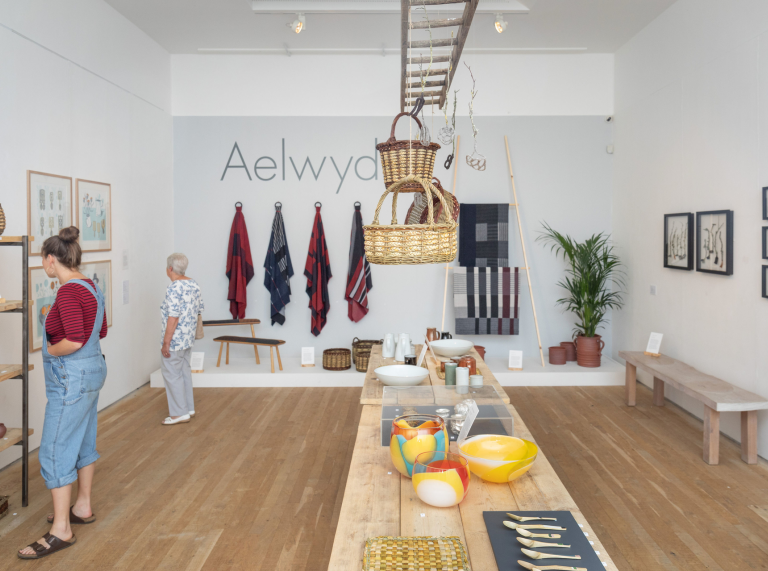
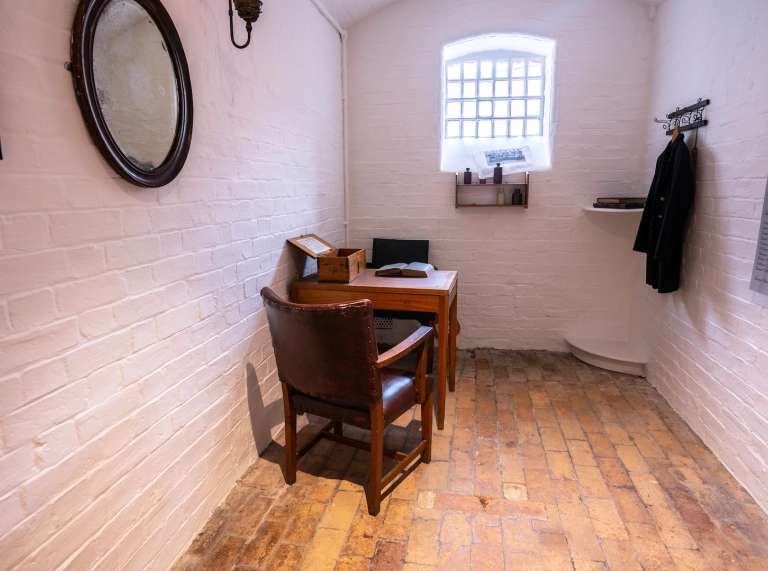
Caerleon, Newport
Where was the legendary court of King Arthur, with its famous round table and a dozen brave knights lolling around it? According to the 12th-century writer Geoffrey of Monmouth, it’s at Caerleon on the outskirts of the city of Newport. Whether or not he's right, there was certainly a major Roman fortress here, built in AD75 to guard the region for the next 200 years. Today it’s our National Roman Legion Museum, which includes the most complete Roman amphitheatre in Britain and the only Roman Legionary barracks on view in Europe – complete with some impressive open-air baths at the nearby Caerleon Roman Fortress & Baths.
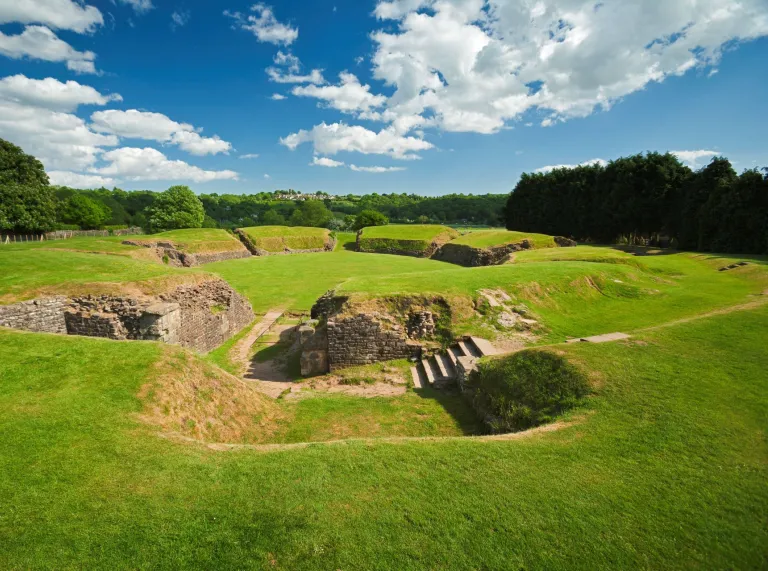

Llyn Barfog, near Aberdyfi
Located a little way northeast of the coastal village of Aberdyfi, Llyn Barfog (which translates into English as "bearded lake") gets its name from the rushes that fringe its shores. Though it might be a serene sight today – especially during summer when its surface is covered in yellow water lilies – this lake was once terrorised by the Afanc, a water monster. King Arthur managed to drag the beast out of the lake, but it was such a struggle that his horse Llamrai left a distinct hoofmark in a rock on the lake’s shores. It’s still there, and has become known as Carn March Arthur, or ‘the stone of Arthur’s horse’.
Carreg Carn March Arthur, near Mold
Back in the Clwydian Range, there’s another stone bearing the mark of King Arthur’s steed. Carreg Carn March Arthur is on the side of the A494 between Ruthin and Mold (just past the We Three Loggerheads pub). The hoofprint, protected by a distinctive stone arch, was left here by Llamrai as he and Arthur leapt from a nearby cliff to escape the invading Saxons. While you’re in the area, leap into the lovely Loggerheads Country Park, which is very close by.
The summit of Yr Wyddfa (Snowdon)
The next time you’re on top of Yr Wyddfa (Snowdon), take a look at the pile of stones that mark the summit. Rhitta was a fearsome giant who made himself a cape out of the beards of his enemies. He tried – and failed – to add King Arthur’s beard to his collection. Arthur killed the giant, and buried his body under those giant boulders.

Dinas Emrys, near Beddgelert
There are very few actual remains of the ancient hill fort Dinas Emrys, but the location plays a vital role in Arthurian and Welsh mythology. It’s said King Vortigern (Arthur’s uncle) was trying to build a castle here, but the walls kept mysteriously falling down. A boy wizard – Merlin – identified the problem: a subterranean dragon lair smack bang beneath the castle’s foundations. After Vortigern’s men woke the two dragons that lurked beneath, one red and one white, they began to fight, with the red dragon ultimately proving victorious – and subsequently becoming a symbol of Wales and Welsh pride. If that’s not enough folklore for one outing, the nearby village of Beddgelert has a very famous dog-related legend of its own!

Merlin’s town, Carmarthen
For centuries, an old oak tree stood atop a roundabout in what is said to be Merlin’s hometown of Carmarthen. It was probably planted to celebrate the return of King Charles II to the throne, but local legend linked it with the wizard of Arthurian legend: ‘When Merlin’s Oak shall tumble down, then shall fall Carmarthen Town.’ In 1978 the last fragments were taken to Carmarthenshire County Museum and sure enough, shortly after, Carmarthen suffered its worst floods in living memory. Parts of the original tree can still be seen today in St Peter’s Civic Hall, while a replacement oak was planted close to the site of the original tree in 2009.
King Arthur’s Labyrinth, Corris
King Arthur's Labyrinth is an old slate mine which has been imaginatively transformed into a subterranean storytelling attraction. You climb onboard with a mysterious hooded boatman, and navigate the vast caverns and passages, while he spins yarns about Arthurian legend and Welsh folk tales. It’s all enjoyable hokum, and there’s a good craft centre back above ground.
Craig y Ddinas, Pontneddfechan
Maybe King Arthur didn’t die. Perhaps the legends are right, and King Arthur and his knights lie sleeping in a cave, waiting for the call to rise up and reclaim Britain from the Saxons. There are lots of caves in Wales that lay claim to being Arthur’s (temporary) resting place. Few are lovelier than Craig y Ddinas, which lies at the heart of the beautiful Waterfall Country in the southwest corner of the Bannau Brycheiniog (Brecon Beacons) National Park.
Ynys Enlli (Bardsey Island), Llŷn Peninsula
Bardsey is the resting place of 20,000 saints, who share this beautiful island at the very tip of the glorious Llŷn Peninsula with an abundance of wildlife. Some say it’s also the legendary Avalon, the magical island where King Arthur’s sword Excalibur was forged, and where, after becoming mortally wounded at the hand of his treacherous nephew Mordred, Arthur was taken to heal – never to be seen again.
